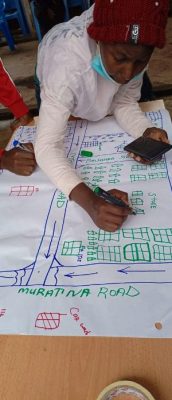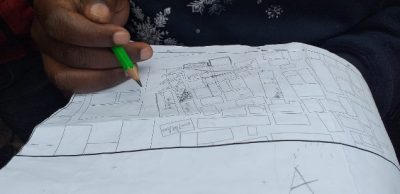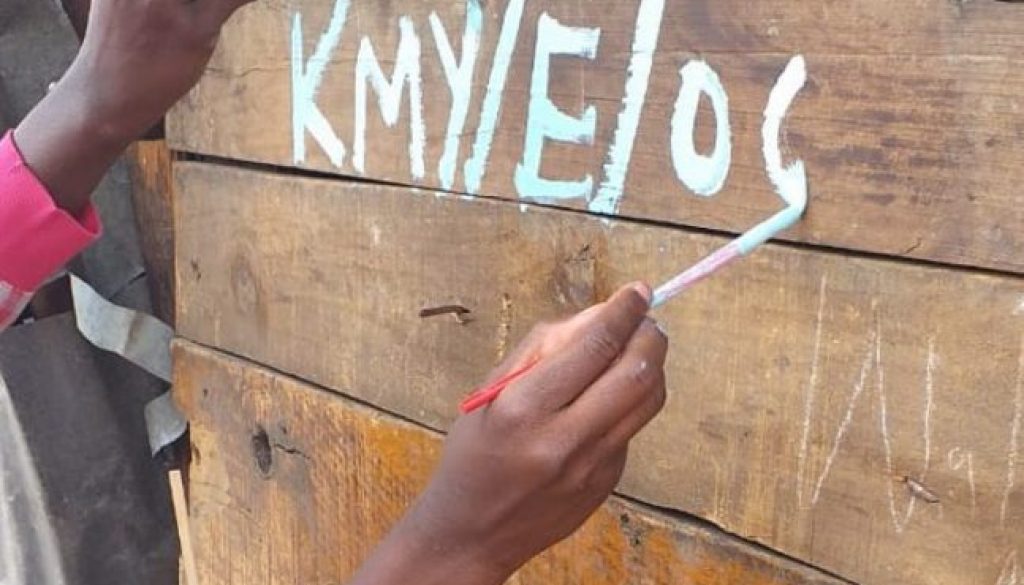Making every household count through a community driven process
Cities are increasingly attracting the world’s population and economic activities as they offer specific advantages. This rapid urbanization, as characterized by the bustling cities, has been accompanied by the development of informal settlements that are now home to multitudes in cities around the globe, such as Nairobi.
Nairobi’s burgeoning slums are, like all communities, places where people live and work. Settlements provide low-cost, affordable housing for low-income residents, as well as alternative places where residents earn their living from informal sector activities. However, while large numbers of people continue to congregate in urban areas leading to a continual proliferation of informal settlements, a range of inequalities sprout, most of which are particularly felt by the urban poor. The expansion and growth of cities strains the capacity of city authorities to provide required basic services to cater to the growing populations. Of greater concern, however, is the exclusion of many informal settlements from the city’s planning agenda.
Developing a community address register in Mathare Kiamutisya village
To help local governments accurately identify the needs of informal settlement residents, SDI’s slum dweller movement has leveraged its mapping, profiling and community-led enumeration processes to provide an up-to-date, accurate account of the conditions in the slums and serve as useful planning tools through the provision of accurate data.
In May 2021, the Kenya Slum Dweller Movement, Muungano Wa Wanavijiji, undertook a comprehensive mapping and numbering exercise in Mathare Kiamutisya village, with the aim of developing a community physical address register. Kiamutisya is one of the villages in Mathare slums located near Mlango Kubwa Village, bordering the Nairobi River and covering about 13 acres of land. This information collection focused on providing community information, which is vital for planning and effective mobilization of resources and services at the grass-root level. This data makes the invisible visible and provides a basis for negotiations with local authorities for citywide initiatives to improve the current condition at community level.
This one-week, community-driven process brought together community residents who were trained and later participated in data gathering. Rather than developing an external team of data collectors, 40 community data collectors helped to organize communities into larger federations and build a basis for the inclusion and active engagement of residents in the process.
The mapping and numbering exercise began with a comprehensive community training session primarily involving the youth and village elders. Pens, markers and maps spread on the floor amidst the ongoing community conversations marked the start of the training session. The federation’s team of urban planners started by taking the community co-researchers systematically through the mapping and numbering process, while giving opportunities to raise questions to clarify the process. Community elders, federation members and the young people further engaged in heated discussions and debates and raised questions.

Boundaries were drawn, disputed and redrawn, and landmarks and services were marked out. Community boundaries were then compared to satellite imagery and the discussion continued. For most community members it was their first time seeing their community drawn on a map.
Next was the community data collection exercise. Resident co-researchers first assigned each structure a door number and located all existing settlement structures on a map. The co-researchers ensured that the painted door numbers corresponded to the numbered structures on the map, while additionally recording the numbered structures on the household numbering sheet. The data collected provided further insights about the numbered household represented on the map by capturing information on the type of structure, construction materials used, the household size, and the occupancy status. The co-researchers made certain this set of household data was captured on the household numbering sheets provided.
This process provides the residents with residential addresses and, in turn, makes it possible to derive a physical address that aids in identifying and locating each structure on the ground.
 It also ensures that each structure is assigned a unique door number through a distinctive systematic method of numbering eg. KMY/A/001/A. The number comprises of the short-form name of the settlement, the cluster in which the household is located, the household number and, lastly, the number of rooms the household structure has.
It also ensures that each structure is assigned a unique door number through a distinctive systematic method of numbering eg. KMY/A/001/A. The number comprises of the short-form name of the settlement, the cluster in which the household is located, the household number and, lastly, the number of rooms the household structure has.
Rolling-out the process
Similar processes of mapping, numbering and community enumerations have been rolled out in areas such as Mukuru and Kiandutu, which aimed to obtain the data on the number of households, but more so to help develop a community physical address. In Mukuru, the process started amidst a period of widespread eviction notices being issued to the community, with community residents collecting data in an effort to prevent eviction through documenting their presence in their community and tying their status to their physical addresses. The process involved the community through the 10 cell (Nyumba Kumi) method, which comprised of the local youth, the 10 cell heads, local authorities and the Member of County Assembly (MCA). The community was involved in mapping, enumerations, profiling and data collection, after which the data was used to spearhead the ongoing Mukuru SPA process.
Over time, the Federation has proved the effectiveness of this community-driven process, which emerges more impactful when the community concerned participates in providing their precise data. Community mapping and numbering processes seek to bring community residents together into larger federations to participate in the process, thereby serving as an effective community mobilization and organizing tool. In addition, the process creates a basis for full involvement of community in large-scale community development projects as they demonstrate the practicability of community taking center stage in driving their own processes. With the development of residential addresses, the push for the provision of services at community level by city authorities, with an efficient system for billing individual households for services provided at a standardized rate, can be made possible.
Beyond the community-driven process
Ultimately, the community-driven data collection process aims to contribute to the Know Your City global campaign to collect and consolidate data to create a basis for inclusive planning. Drawing from this overarching agenda, the collection of such data aims to contribute to the Mathare Special Planning Area Research Collective (MSPARC), a research consortium formed in 2019 with the aim of bringing about community-centered planning and upgrading in Mathare. The contribution of the mapping and numbering process within the Mathare MSPARC will fundamentally help to demonstrate ways in which the collective power of a community driven data collection process can increase slum dweller participation in their own development.
Authors: Susan Wangui (KYCTV), Jackline Waithaka
